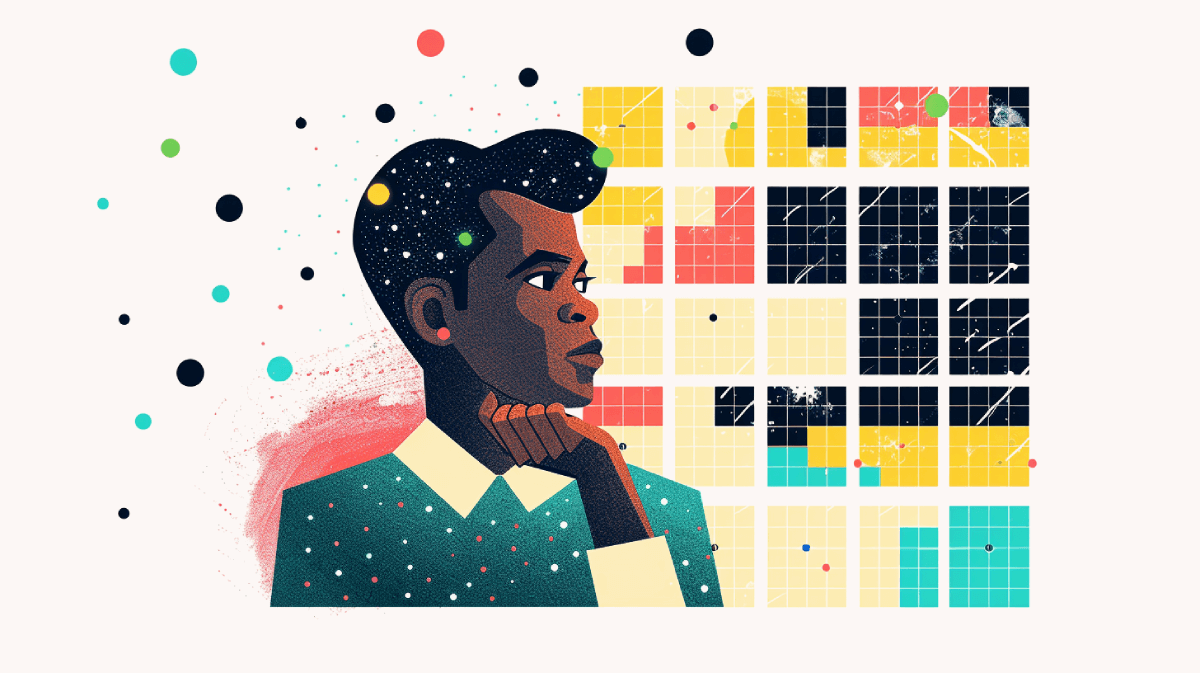The Johari window, explained
Self-awareness and interpersonal skills can really benefit our success in the workplace.
The Johari Window is a straightforward framework that can help you gain insights into yourself and others, leading to better communication, collaboration, and personal growth.
What is the Johari Window?
The Johari Window was developed by psychologists Joseph Luft and Harrington Ingham in 1955. It's a simple yet effective tool for understanding and improving self-awareness and interpersonal relationships.
Underlying the model are two factors: what others know about us, and what we know about ourselves. The overlap consists of shared knowledge, while outside of either lies the truly unknown.
Typically, this is displayed in a quadrant diagram, but a venn diagram perhaps illustrates the notion of the Johari Window even better:
The model consists of four areas that represent different aspects of the self:
The Open Area: In the overlap, we find the common knowledge that both you and others know. At first, this area might be mostly populated by superficially obvious things.
The Blind Spot: Here lie the things others know about you, that you don’t yet know about. Nerve-wracking, isn’t it? They might have spotted a behaviour pattern that you’ve overlooked, interpret your actions in a different way than you intended, or (here’s hoping) secretly find you to be utterly amazing and wonderful, all of the time.
The Hidden Area: Facts and perspectives that are known to you, but not to others. The hidden area of the Johari window might include…
your internal perspectives, opinions and motivators that aren’t visible to external parties
your intentions, rather than your actions
things about yourself you’ve simply never thought to mention
things you assume other people must already know, but they actually don’t
and of course, things you keep intentionally private!
The Unknown Area: What is unknown to both you and others. The true unknown. These are the things that nobody has worked out yet, not even you.
By understanding these areas, you can set to work on expanding your open area, reducing your blind spots, and selectively sharing from your hidden area to build trust and rapport with colleagues.
Expanding your open area
In the Johari window model, a larger open area is associated with a range of benefits in both personal and professional contexts.
Research suggests that individuals with higher self-awareness tend to have better psychological wellbeing, more satisfying relationships, and improved job performance (Sutton et al., 2015). Self-awareness allows us to manage our emotions, align our behaviour with our values, and communicate more effectively.
Similarly, appropriate self-disclosure builds trust, intimacy, and rapport in relationships (Collins & Miller, 1994). In the workplace, it can lead to better teamwork, increased job satisfaction, and more effective leadership (Jourard, 1971).
So how can we grow the open area? Let’s look at two different scenarios to find out.
This scenario might represent the slightly-stilted feeling of first joining a new group.
They don’t know very much about you, so their circle of knowledgeis small.
You haven’t developed enough mutual trust to share too much about yourself.
As a result, the ‘open area’ is very small, representing a lack of connection.
Let’s jump forward in time…
In this scenario, the open area of shared knowledge is much larger. Both you and the people around you know more outright, and there’s much more overlap. This occurs in four related ways:
Self-discovery: as you learn more about yourself – this might include finding new preferences, skills, perspectives and so on – you expand the blue circle, and bring information from the unknown area into the hidden area
Self-disclosure, as you reveal more about yourself to others, bringing areas of the hidden area into the open area
Observation, as others learn more about you, expanding the red circle.
Feedback, as others share their perspectives with you, areas move from the blind spot into the open area
By seeking feedback and engaging in thoughtful observation, we can uncover blind spots, learn from others, and make more informed decisions. In short, expanding our open area through the Johari Window framework is a key pathway to personal growth, stronger relationships, and professional success.
As you consider how you can improve as a manager or team member, you might find this framework really helpful. Here are some ways to apply the Johari Window in your day-to-day work life:
1. Seek feedback: Ask for honest feedback from your colleagues to uncover blind spots and gain a more complete picture of yourself.
2. Share appropriately: Reveal relevant information from your hidden area to build trust and foster deeper connections with your team.
3. Encourage openness: Create a safe, supportive environment where team members feel comfortable sharing and receiving feedback.
4. Embrace the unknown: Be open to exploring new aspects of yourself and others through self-reflection, learning, and personal growth.
By actively changing the size and shape of your own Johari Window, you can improve communication, build stronger relationships, and create a more collaborative and effective work environment.
Example of a Johari window
Let’s imagine a manager called Chris. His own personal Johari window might look a bit like this…
| Open Self | Hidden Self |
|---|---|
|
|
| Blind Spots | Unknown Self |
|
|
Considerations and connected concepts
While the Johari Window is a valuable tool, it's important to remember that self-disclosure should be appropriate and context-dependent. Oversharing can sometimes damage relationships or undermine professionalism.
The Johari Window is closely connected to other concepts in psychology and personal development, such as emotional intelligence, self-awareness, and the concept of the "growth mindset" popularized by Carol Dweck. By combining insights from these frameworks, you can develop a more comprehensive approach to personal and professional growth.
The Johari Window is a simple yet powerful tool for understanding yourself and others in the workplace.
By seeking feedback, sharing appropriately, and fostering openness, you can expand your self-awareness, build stronger relationships, and create a more collaborative and effective work environment. Whether you're a manager looking to support your team's growth or an individual contributor seeking to maximize your personal impact, the Johari Window offers valuable insights for your journey to workplace success.










